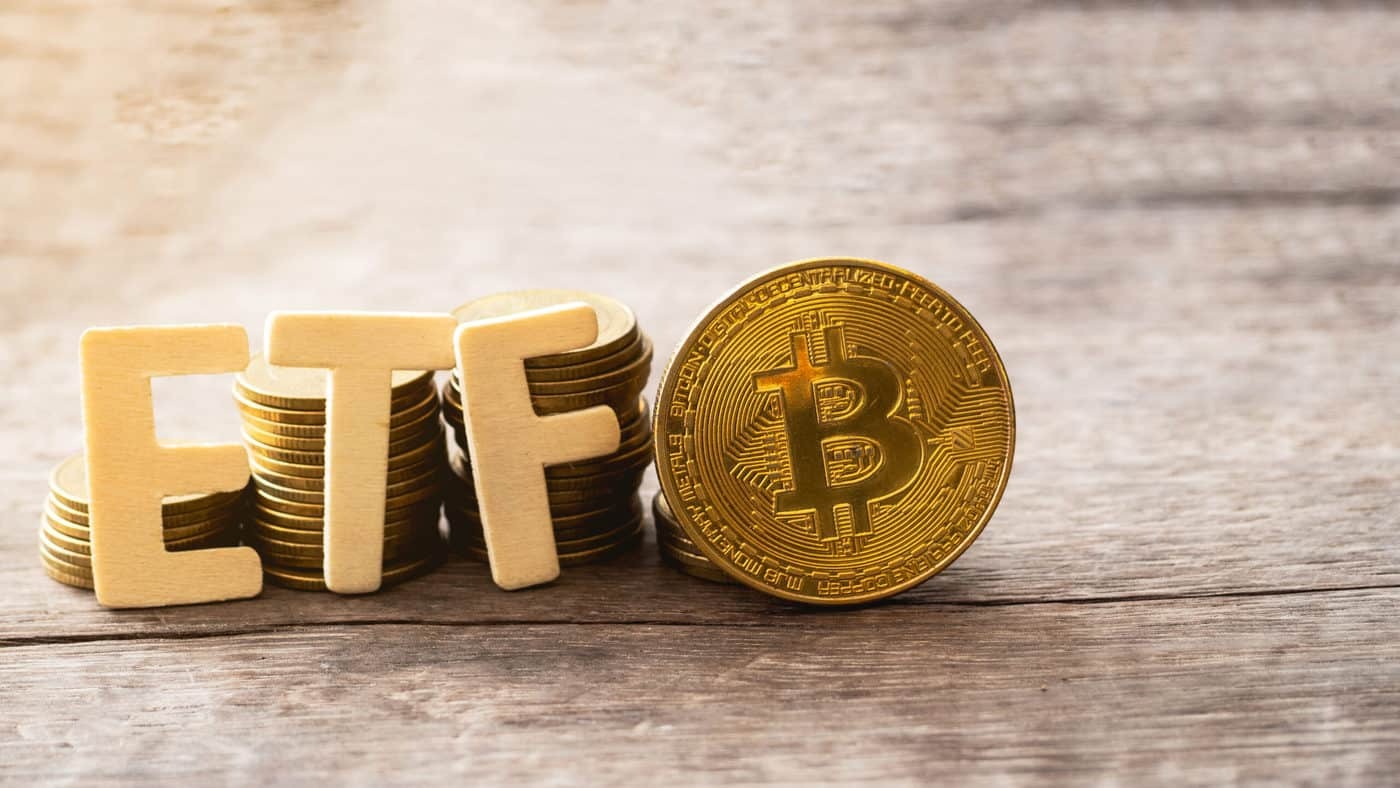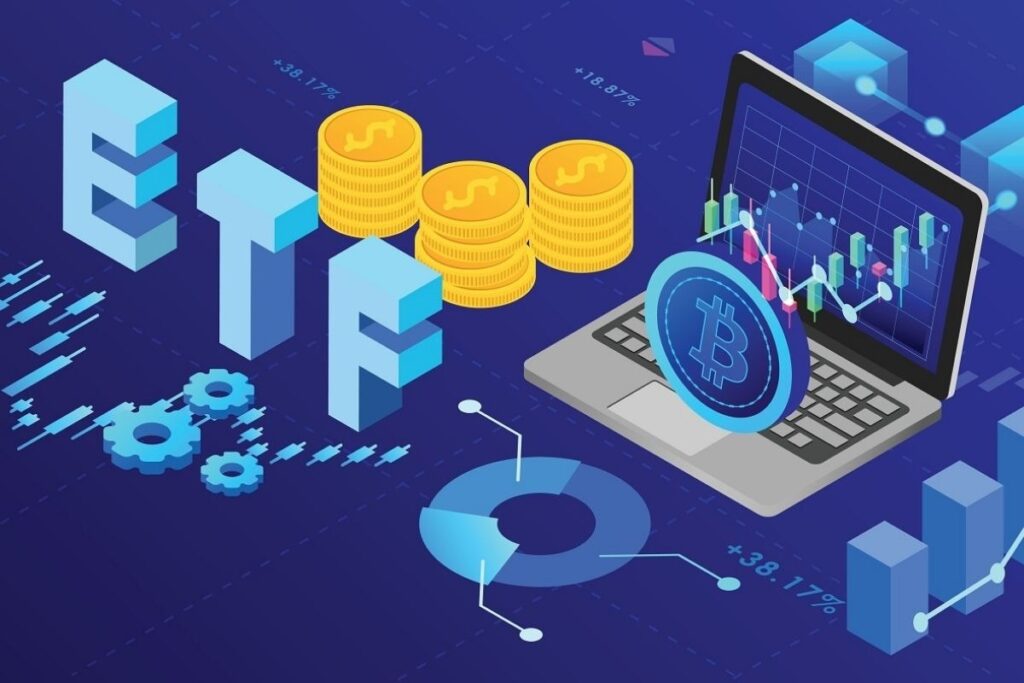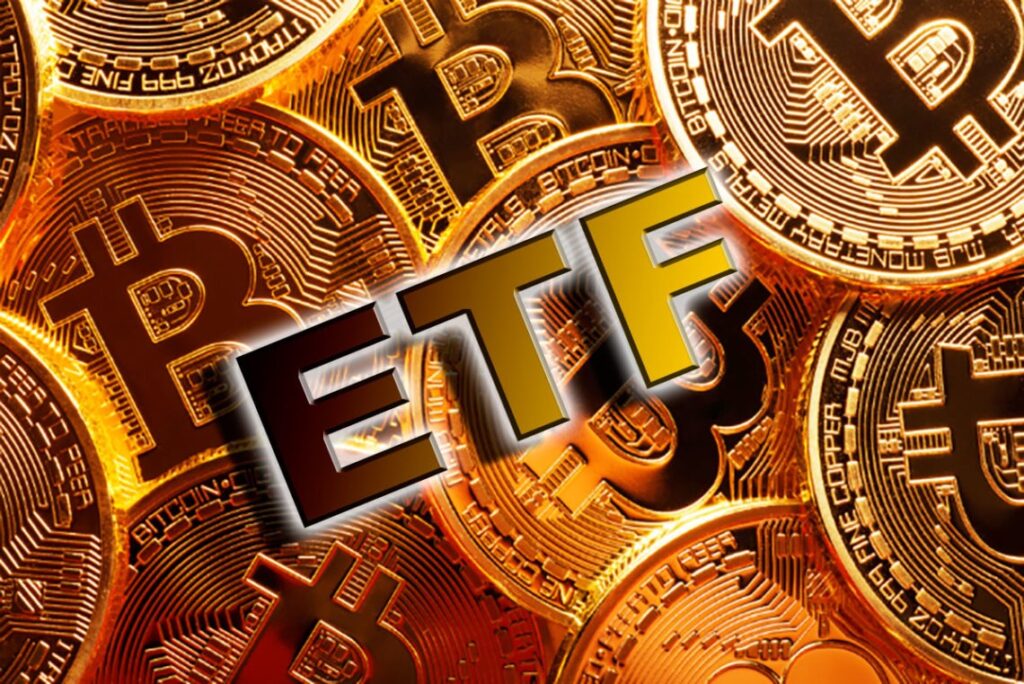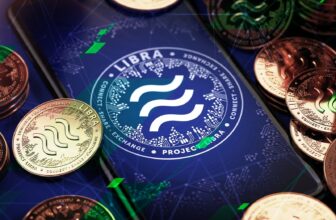
Crypto ETFs gained popularity in the 90s, becoming one of the most dominant financial instruments in the stock market. In recent years, the crypto world has introduced its variation on ETFs, allowing traders to benefit from investing in cryptocurrencies without owning them at any point. This article will explore the nature, strengths and weaknesses of crypto ETFs.
Table of Contents
What Are Crypto ETFs?

Source: coinmarketcap.com
As outlined above, crypto ETFs are a variation of conventional ETFs. These instruments have gained massive popularity in recent years as they significantly decrease the inherent volatility and market risks of crypto. Crypto ETFs are similar to standard ETFs found in stock markets. They usually track a particular index, sector, asset or any other commodity. As for the crypto variation, ETFs can target a single crypto like Bitcoin or Ethereum. Some ETF variations even track a mixture of different crypto coins.
How Do Crypto ETFs Function ni Practice?
The creation and redemption process is essential to the functioning of bitcoin exchange-traded funds, as it maintains the ETF’s value compared to the underlying assets featured in the portfolio. When creating an ETF for a cryptocurrency, authorised participants (APs), frequently large-scale financial institutions, purchase the underlying coin. Massive amounts of the relevant cryptocurrency are bought by the APs and deposited with the ETF provider. The supplier gives the APs shares in an exchange-traded fund (ETF) in return for their exchange.
The ETF market valuation fluctuates according to the crypto prices it tracks. To stabilise the ETF valuation and prevent it from skewing in unwanted directions, the APs conduct arbitration. There are two options here – either APs purchase additional crypto to generate ETF shares or sell the relevant cryptos to minimise their losses.
Trading With ETF CFDs
Conducting ETF trades utilising the contracts for difference (CFDs) is a very popular strategy in crypto. CFDs are mechanisms that allow two parties to set a future purchase agreement related to a specific asset. Thus, ETF CFDs allow traders to benefit from crypto appreciation or devaluation without actually purchasing the underlying asset. CFDs allow traders to take both long and short position related to cryptocurrencies, which is great for trading flexibility.
Advantages And Drawbacks fo Crypto ETFs

Source: paybito.com
Crypto ETFs have numerous benefits that are hard to acquire in this market, including accessibility, affordable prices, risk mitigation and ample liquidity. Crypto ETFs assist the crypto market to become more mainstream and accessible to the conventional trading customer base. They are listed on mainstream stock exchange platforms, which drastically decreases the inherent complexity problem of crypto.
With these mechanisms, traders can access popular exchange platforms without plunging into the frequently confusing world of crypto wallets, decentralised exchanges and much more. Additionally, ETFs allow investors to diversify their portfolios beyond the conventional markets, entering the crypto landscape with minimised risks.
The Downsides of Crypto ETFs
On the other hand, crypto ETFs have several drawbacks, including volatility, regulatory restrictions and market manipulation threats. The crypto regulations are still not consistent across the board, as it is a relatively young industry that is still maturing every year. Due to the inherent risks associated with anonymity, some crypto markets are severely regulated, which is a considerable downside for investors.
Additionally, the risk of market manipulation always persists in crypto, with numerous participants trying to conduct fraudulent operations or white-collar crime. While the increased regulatory attention has alleviated some of these threats, the crypto landscape remains risky.
How Can You Add ETFs to Your Investment Firm?
An investment business must upgrade its IT infrastructure, identify dependable liquidity sources, assure regulatory compliance, and conduct in-depth market analysis before adding ETFs. Finding the interests of investors, evaluating the competitive environment, and determining the present market demand for ETFs can be achieved with in-depth market research. Obtaining the required licences or approvals, filing paperwork with regulators, or changing business practices to comply with regulations are all the necessary steps of regulatory compliance.
Finally, companies must onboard and launch the ETFs. This process involves several steps, including updating brokerage product lists and educating staff on the intricacies of ETFs. This is important since your staff needs to have a clear understanding of ETFs to answer all customer questions and problems. After this, it is time to launch an appropriately measured marketing campaign to increase the outreach of your offerings and get the attention of investors and traders.
Conclusion

Source: thecoinrepublic.com
In the first quarter of 2024, crypto ETFs outperformed all other ETFs with extraordinary growth rates of 61.95% to 98.66%, making ETFs the go-to investment vehicle for many market participants. Thus, crypto ETFs are one of the most successful trading instruments in this industry. However, they require careful consideration and in-depth understanding to be utilized effectively.







